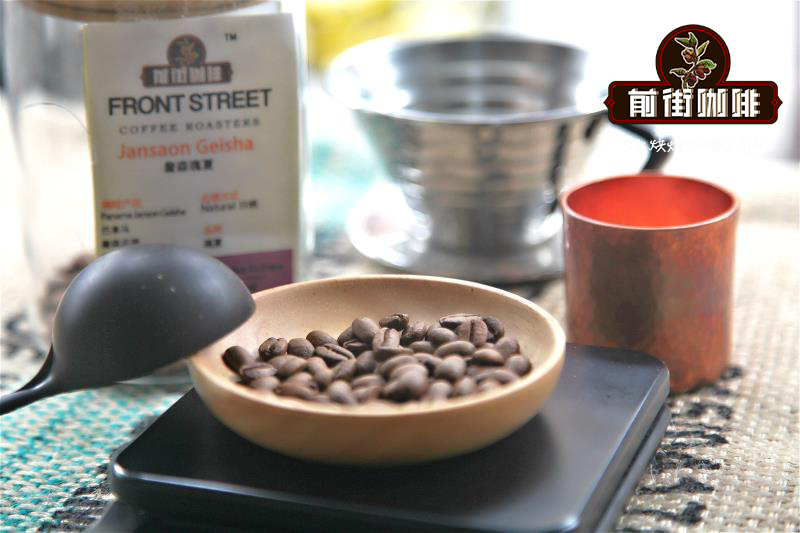What are the characteristics of Ethiopian coffee? do you know the coffee story of the shepherd Caldi?

Professional coffee knowledge exchange more coffee bean information please follow the coffee workshop (Wechat official account cafe_style)
Ethiopia is an underdeveloped country located in northeast Africa, but this country is a famous coffee producer in the world.
Ethiopia has the most diverse coffee ecosystem in the world (forest coffee, semi-forest coffee, pastoral coffee and plantation coffee), which enables the preservation of its rich Arabica genes, coupled with multiple treatments of sun, water and semi-washing, showing a complex and varied flavor. It can be said that most of the "taste spectrum" of coffee producing areas around the world can be drunk here, reflecting Ethiopia's inclusive "king flavor". In addition, Ethiopia is the cradle of Arabica coffee beans, and growing, stir-frying and brewing coffee are unique local cultural heritage.
Farmers are used to growing coffee, bananas, grains, vegetables, and other crops in the fields, and store dried coffee fruits as currency on the one hand, and for friendship, weddings, funerals, and religious activities on the other. Traditional Ethiopians even have coffee to celebrate when they give birth to livestock.
The average family has a fixed time, place and ceremony for drinking coffee, just like Christian worship, which is called "Bunna ceremony". The traditional methods and utensils they use to make coffee are completely different from the general way we extract coffee today, and the coffee also has a unique flavor.
Characteristics of coffee producing areas in Ethiopia
There are mainly nine major producing areas of Ethiopian coffee, namely: Yirgacheffe (Yega Sheffield), Sidamo (Sidamo), Harar (Hara), Limu (Lim), Lekempti (Lekhampdi), Illubabor (Iruba), Jimma (Jinma), Teppi (Tippi) and Bebeka (Bebeca).
The coffee-producing region of Ethiopia is divided into east and west parts by the East African Rift Valley, with lakes, volcanoes, lowlands, plateaus and woodlands interlaced, each evolving. Most of the eastern half is the plateau, and the coffee beans taste better, such as Yega Scherffe and Sidamo, which are popular with bright sour taste, and Hara, which is charming and "miscellaneous"; the western half is covered with a large area of primeval forest, and most of them are in the process of completely natural evolution. it has created a more complex variety of coffee, and the coffee varieties in the Kafa forest in the southwest are highly resistant to disease. Due to natural evolution and less manual screening, its overall flavor is slightly lower than that of the eastern half of the wall.
Yirga Cheffe is a small town in eastern Egypt, 1800-2000m above sea level. The ancient saying "Yirga" means "settle down" and "Cheffe" means "wetland". Yejaschen, which is attached to the Sidamo region, is very popular in the world boutique coffee circle because of its unique jasmine fragrance and citrus acid. This special taste is also known as "Yejashifen" taste. According to the defect rate of raw beans, Yejia snow caffeine can be divided into five grades of G1~G5 from good to bad. It is generally washed with water, but there are also a small number of excellent beans intended to be insolated to enhance the charming fruit aroma and mellow thickness.
The Sidamo production area is very close to Yega Cherophine, and its flavor is also very similar. After delicate washing or sun treatment, it also has floral and citrus flavors, soft sour taste and the same price as Yega Chet. Like Yejasuffe, this variety has medium-sized beans, but there are also small-grain varieties with dwarf plants. Sidamo coffee is generally light to medium roasted to retain the bright sour taste and intoxicating floral aroma of the variety.
Harar caffeine is famous for its miscellaneous fragrance and is listed as the "Ethiopian double star" alongside Yega Schiffe. The climate of the Hara area is dry and cool, all using the sun treatment method, if the defective beans are picked clean, it is easy to drink the berry flavor, with a slightly pleasant fermented miscellaneous aroma. However, farmers here are used to mixing fine products with commercial grade, and the quality of coffee beans is not stable.
Limu region is the only boutique coffee producing area in the west half of the wall, with less output and mainly exported to European and American markets, rarely seen in Asia. There are three kinds of treatment: water washing, sun washing and semi-washing. For Europe and the United States, the ranking of water washing Lim is second only to Yega Schiffe. The taste spectrum of Lim is different from that of Sidamo and Yega Schiffe, the consistency is obviously lower, and the performance of flower aroma and citrus acid is also lower than that of Yega and Cedamo, but there is a smell of grass and black sugar, and the fruit acid is bright.
The Story of Shepherd
The legend of the shepherd took place on the Ethiopian plateau about 1500 years ago, and today it is a widely accepted story. Posters of the story are also displayed in the Ethiopian capital cafe.
It is said that there is a young shepherd named Kaldi in the Kaffa forest in southwestern Ethiopia, west of the Great Rift Valley. He finds that there are always some restless or excited "troublemakers" in the flock, even standing up with their front legs up and dancing with others. Through observation, Caldy soon found that the overexcited sheep ate the red berries of a green shrub. When he tasted some red fruits with the fearless spirit of "the first to eat crabs", he found that his spirit was extremely strong. As a result, this exciting and refreshing red fruit has been recognized by more and more people, and quickly became popular among many tribes. It is the wild coffee fruit.
END
Important Notice :
前街咖啡 FrontStreet Coffee has moved to new addredd:
FrontStreet Coffee Address: 315,Donghua East Road,GuangZhou
Tel:020 38364473
- Prev

The difference of Sakui Coffee Bean during Solar treatment system of Panamanian Rosa Coffee Bean
Professional coffee knowledge exchange more coffee bean information please follow the coffee workshop (Wechat official account cafe_style) Ethiopia's famous coffee producing area of Sidamo, there is a place called Hambella, which produces a cup of coffee. Since 2016, it has won many awards in the coffee competition in Africa, which has attracted the attention of the world coffee industry. Huakui coffee will spread the coffee fruit directly.
- Next

What is the special flavor of Costa Rican black honey coffee beans | characteristics of Costa Rican black honey treatment
Professional coffee knowledge exchange more coffee bean information Please follow the coffee workshop (official Wechat account cafe_style) talking about the treatment of coffee, in addition to washing, sun exposure, there is also a quite common way of treatment, honey treatment, which is between washing and sun treatment, which is very common in Costa Rica. Characteristics of honey treatment peeled and sunburned in Brazil spread to Costa Rica
Related
- Beginners will see the "Coffee pull flower" guide!
- What is the difference between ice blog purified milk and ordinary milk coffee?
- Why is the Philippines the largest producer of crops in Liberia?
- For coffee extraction, should the fine powder be retained?
- How does extracted espresso fill pressed powder? How much strength does it take to press the powder?
- How to make jasmine cold extract coffee? Is the jasmine + latte good?
- Will this little toy really make the coffee taste better? How does Lily Drip affect coffee extraction?
- Will the action of slapping the filter cup also affect coffee extraction?
- What's the difference between powder-to-water ratio and powder-to-liquid ratio?
- What is the Ethiopian local species? What does it have to do with Heirloom native species?

